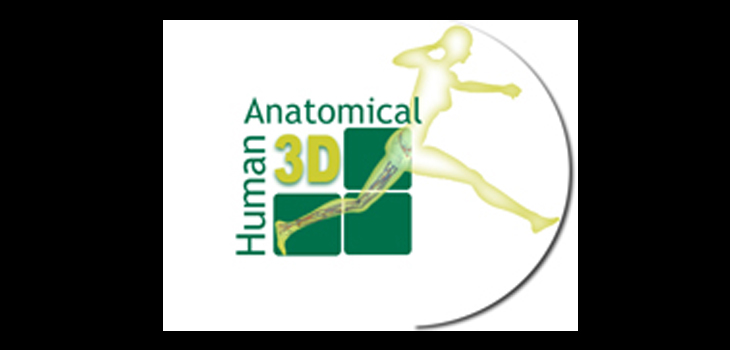
3DAH – “3D anatomical functional models for the human muskuloskeletal system”
Overview
The objective of this Marie Curie Research Training Network project is to train a body of researchers in the various domains involving the modelling and simulation of human body for medical purposes. It will bring together people with different background and know-how, but all sharing an interest in some of the many facets of human body modelling and simulation. Having in mind the concept of a functional human body atlas, the participants will collaborate together to provide the European community with the next generation of tools and methodologies that could drastically change our understanding of musculoskeletal motion, medical training and treatment designing and planning in the next ten years.
Human body representations have been used for centuries to help in understanding and documenting the shape and function of its compounding parts. Since the Da Vinci drawings, human body atlases have evolved a lot, and can nowadays describe the human anatomy with great precision, even in three dimensions. How the body works: its systems and their functions, the mechanics of human motion, the pathological and healing processes, growing and aging, etc are some among the many topics being studied and described for years in different domains of science, from the medical field to computer graphics.
While the greatest anatomy atlases consist of static images of the body, existing functional models of human physiology, biomechanics and motion are rarely associated to the patient-specific shape of the corresponding anatomical structures. Functional models of parts of the human musculoskeletal system or even of that whole system, bringing together the various facets of human modelling (anatomy, biomechanics, physiology, motor control, pathology/healing) will be of great value as a support to study, discuss and analyze.
MIRALab’s contribution
MIRALab, and Prof. Nadia Magnenat-Thalmann, is the coordinator of 3DAnatomicalHuman, and chairs the Network Co-ordination Committee. Additionally, in the project MIRALab is also responsible for the development of the visualisation/interaction framework that will allow the individual examination of musculoskeletal systems in motion while merging several types of data from the different partners. MIRALab will besides insure the assessment of the medical relevance of the visualization/interaction techniques towards training and virtual examination. Moreover MIRALab will manage the exploitation and the knowledge transfer, especially through the 3D Anatomical Human European Institute.
Partners
Aalborg University
Denmark
en.aau.dk
Centro di Ricerca, Sviluppo e Studi Superiori in Sardegna
Italy
www.crs4.it
Ecole Polytechnique Féderale de Lausanne, Virtual Reality Laboratory (VRLab)
Switzerland
vrlab.epfl.ch
Institut National de Recherche en Informatique et Automatique
France
www.inria.fr
Istituti Ortopedici Rizzoli
Italy
www.ior.it
MIRALab, University of Geneva
Switzerland
www.miralab.unige.ch
University College London
Great Britain
www.cs.ucl.ac.uk
Vrije Universiteit Brussel
Belgium
www.vub.ac.be
